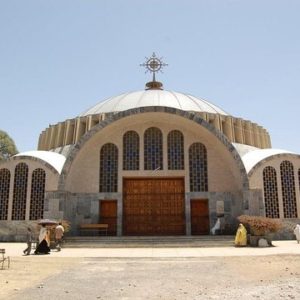
Museum Marathon Day | Explore the best museums in Addis (Lunch included) : As a nation with more than 3,000 years of age and 80 Ethnic groups, Ethiopia is rich in culture, history, ancient civilization(and More)
$100.00
- Reviews (0)
Be the first to review “Museum Marathon Day | Explore the best museums in Addis (Lunch included) : As a nation with more than 3,000 years of age and 80 Ethnic groups, Ethiopia is rich in culture, history, ancient civilization(and More)” Cancel reply
Related Products
-
Lalibela, Gondar and Bahirdar | Customized
0 out of 5$785.00Lalibela Customized Tour
-
Celebrating Epiphany | Ethiopia’s most colorful holiday of the year.
0 out of 5$270.00Timket is the greatest colorful festival of Orthodox Christians in Ethiopia. The festival of Timket falls on January 20. It is observed in commemoration of Jesus Christ’s baptism in River Jordan. Timket is a two-day affair and all the ceremonies are conducted with great pomp.
Timket traces its roots back to biblical times. In the early days of Judaism, a sacred box overlaid with gold was kept in the most holy place in the Jewish temple. Known as the Ark of the Covenant, it represented the coming Messiah.
Fast forward to the first millennium, when Jesus of Nazareth was hailed by many as that long-awaited Messiah. His earthly ministry was marked by baptism in the Jordan River. Ever since, Ethiopian Orthodox churches have treasured and closely guarded their own model of the Ark of the Covenant, called a tabot. The tabot only leaves the church during Timket, when it’s carried with great pomp to a nearby pool or river and immersed, along with many of the Christian faithful, in commemoration of Jesus’ baptism. -
Axum Day Tour
0 out of 5$840.00Axum and Lalibela
-
Explore Addis’ Most Famous Mountains (Entoto and Kale) | Breakaway from the hectic life of Addis Ababa into the highest point of Addis Ababa for some nature(and More))
$100.000 out of 5 -
Ethiopian New Year Eve Celebration with Addis City Tour
0 out of 5$69.00Highlights
Ethiopian New Year takes place in September around the 11th or 12th. It is Known as Enkutatash, which means “Gift of Jewels”. Ethiopian follow the Julian Calendar that contains of 13 months (12 months of 30 days and one month with just 5 days/6 in a leap year). The calendar is 7 years and 8 months behind the Western Gregorian calendar. The New Year signifies the end of the rainy season and the lush green landscape (from 2-3 months of heavy rain) is very picturesque dotted with yellow Meskel Flower and a great time to celebrate the new year harvest. Celebrations are both religious and secular including church services and festive family meals. Children gather yellow flowers, receive small gifts and sing.
-
Hiking
0 out of 5$100.00Hiking In Groups
Every Weekend
From 3 to 6 hours
-
Harar City and Babile Elephant Sanctuary Tour 2 -3 days
$250.000 out of 5 -
HALF DAY: Market Highlights of Addis ABABA
$65.000 out of 5 -
Stopover Tour | Trip To Washa Michael – Rock Hewn Church In Addis Ababa
0 out of 5$150.00Can’t get to Lalibela, but a want to see a Rock Hewn Church near Addis Ababa? Washa Mikael!!
The Washa Mikael Rock Hewn Church (Amharic: ዋሻ ሚካኤል [wä schä mi kä el] literally “The Cave of Michael”) is a rock-hewn semi-monolithic church located in the Yeka District of Addis Ababa, the capital city of Ethiopia. Historians and the Ethiopian Orthodox Church date it back as far as the 4th century AD pointing to its resemblance to Aksumite era churches in other regions of Ethiopia and to the Sabaen artifacts found at the site of the church. They further explain that structures in and around the church show that the area was once used as a training ground for the horsemen of the Aksumite armies of King Ezana, arguing that the area was one of the territory held by the vast Kingdom of Aksum. It is a popular tourist destination.
History
Washa Mikael church was constructed in the Shoan architectural style with some influences from the Aksumite style. Similar to the some of the churches of Lalibela, Washa Mikael is a rock-hewn semi-monolithic church.
In the 19th century, Emperor Menelik II rediscovered the structure after it was initially abandoned during the Abyssinian-Adel war. He had the Tabot of St. Michael moved from inside the church to a church he had build lower down the mountain called Yeka Mikael. He subsequently made attempts at restoring and preserving the structures of the church.
The church suffered damages during the heavy bombing campaigns of the Italians during the second Italo-Ethiopian War.
From above the church has a “U” shape also known as the letter “ሀ” in the Ethiopian Alphabet. This shape was meant to signify the Ge’ez phrase starting with the same letter, “ሀልዎቱለ ኣብ እምከድሜ ዐለም” (Halwotule ab emkdme alem) which means “Before anything existed, God was here”. The original church stood 7 meters tall and had 7 windows which represented the 7 heavens, 7 days and 7 angels.
Reference : Wikipedia
-
HALF DAY: Afternoon Culinary Tour
$65.000 out of 5
















Reviews
There are no reviews yet.